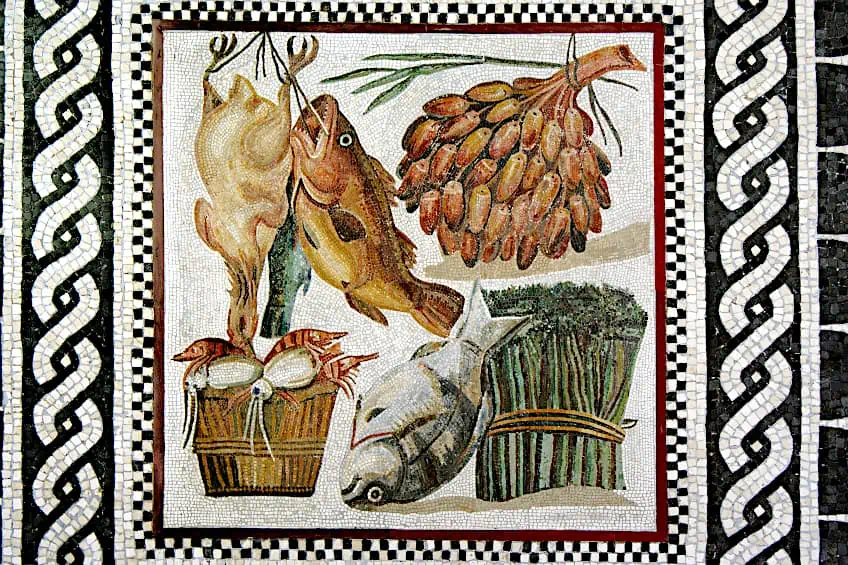Roman Mosaic – A Guide to Rome’s Tesserae Arts
Mosaics are one way of combining the genre of sculpture and painting, yet are unique artworks almost 100 percent of the time. Mosaics have existed since the era of antiquities, with many skilled artists using their favorite heroes and subjects in their artwork. In this article, we will be looking at a specific genre of mosaics found in ancient Rome. You will be fascinated by the many wonderful creations of the ancient Roman civilization and the way such artworks were created and thought of during the Roman Republic.
Contents
Ancient Roman Mosaics in Art
Creating a mosaic is no easy art form and for early artists of the 1st and 3rd centuries, the art of mosaic-making was a laborious process. From sourcing select stones and selecting appropriate or popular subject matter, mosaic artists of the past have not been given enough credit.
Ancient Greek culture served as a huge pool of inspiration for their Roman counterparts, who studied the arts and culture of the Greeks so closely that the phrase “imitation is the best form of flattery” was put to the test.

Below, we will uncover the history of Roman mosaics by looking at the origin of the art form as per Roman culture as well as a few interesting examples of Roman mosaics that will spark your interest in the art form.
What Is a Roman Mosaic?
A Roman mosaic refers to a mosaic artwork that was created by artists from ancient Rome who operated during the Roman Republic, all the way through to the days of the Roman Empire. Mosaics were a great way of adding an artistic flair to any building or monument and for ancient Romans, pride in the city’s architecture and art was heavily influenced by ancient Greek Hellenistic culture.
While some may assume that it was the Greeks who achieved the height of sophisticated art forms, it was, in fact, the Romans who perfected the art of mosaics.
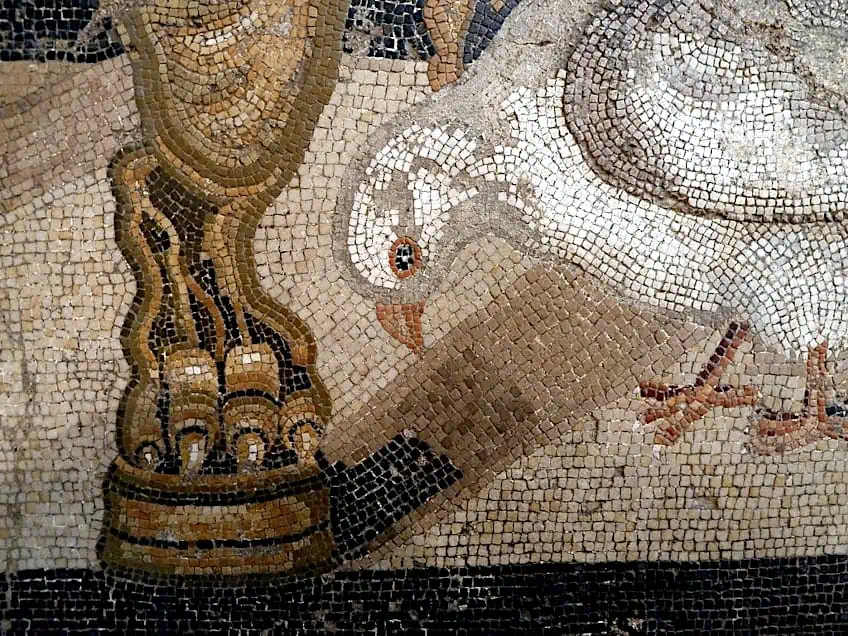
The Origins of the Roman Mosaic
Some of the earliest examples of Roman mosaics date back to the 2nd century BCE in Greece, and coincide with the Pompeii first style in mural art of the 1st and 2nd BCE. The latter half of the 5th and early 4th centuries saw the use of tessellated pavements constructed out of small pieces of stone and marble called tesserae, which were discovered between the 1st and 3rd centuries BCE.
Although there are many theories about the time frame of when the first Roman mosaic appeared, it is clear that there was a transition from simple pebble-based mosaics to complex imagery and tessellated mosaics. The tessellated mosaics were often attributed to Hellenistic Greek Sicily.
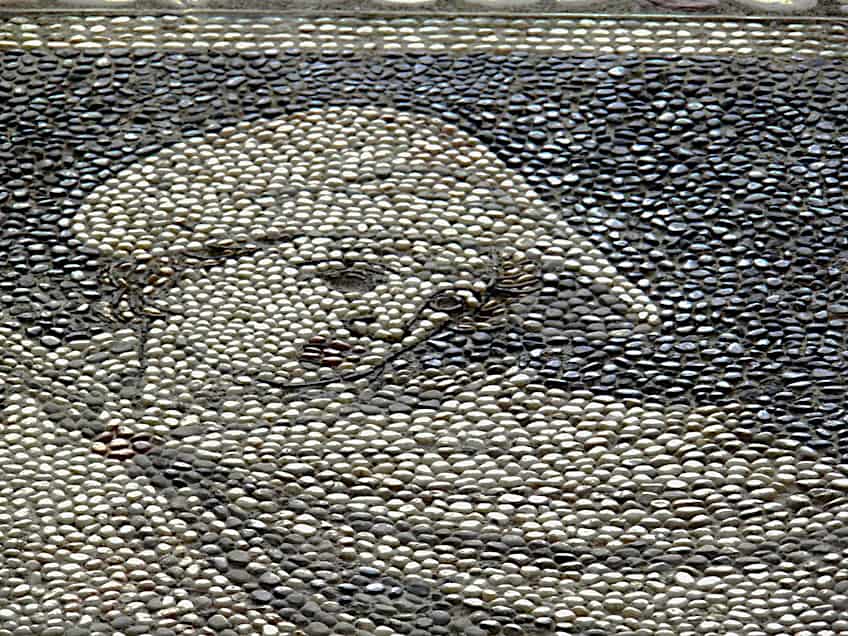
Some of the most famous of these early Roman mosaics appear at sites such as Macedon, Olynthus, Pompeii, and Sicily.
The Purpose of Ancient Roman Mosaic Art
You may wonder why the early Roman-led society even preferred the elaborate mosaic as an art form in the first place. The purpose behind mosaic art in Greco-Roman culture was not only an indication of status and a common demonstration of wealth, but it was also a way of paying tribute to the culture and society of the time.
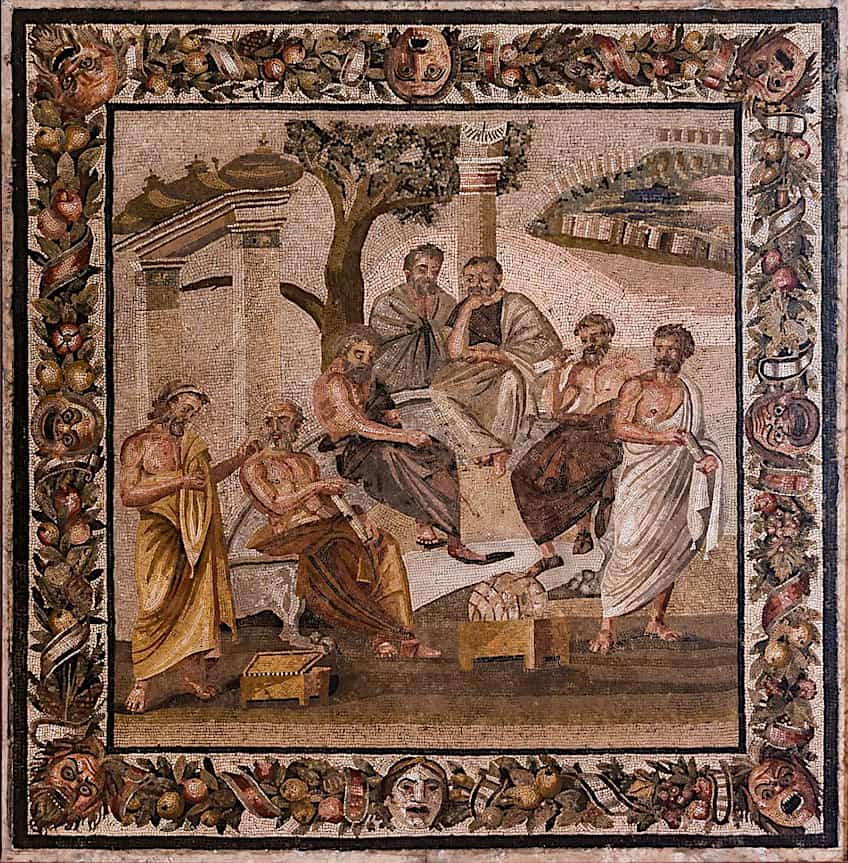
By paying attention to the subject matter, one can gain insight into the significance of the art form to society and the amount of labor and money required to create such elaborate tributes. Mosaics were also a decorative feature for the simple enjoyment of people and guests. Mosaics could be found on vaults, walls, and floors, thus making the art form one of the most flexible and interesting art forms of the time.
The preservation of antiquity-era-based mosaics and artworks, in general, was fragile and with the collapse of a home or building, an artwork or mosaic would have easily either been completely demolished or partially preserved.
Manipulating the Tesserae
What does “tesserae” refer to in Roman mosaic art? “Tesserae” refers to the small geometrical blocks of natural stone that mosaic artists from the 1st and 3rd centuries used to create elaborate and detailed mosaics. Tesserae is also another word for Roman mosaic tiles, which were crucial to the development of mosaic art. Materials such as glass and marble were common materials used for tesserae, which also gave mosaics a sense of finesse and opulence. Metals such as gold were also incorporated for an added sense of value and pride in the building or home that housed the mosaic.
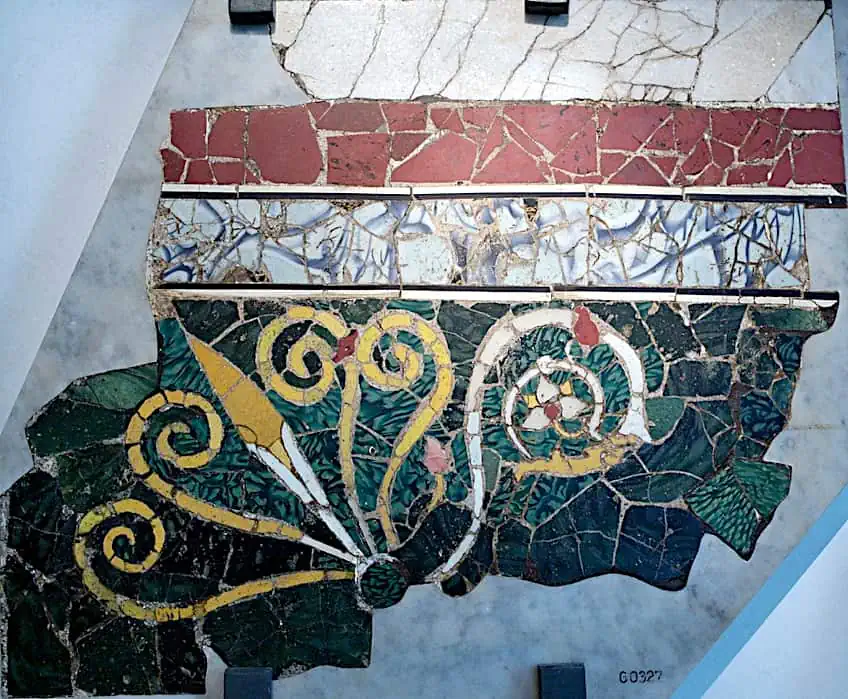
Many artists sourced their Roman mosaic tiles from areas where they could find natural stones and would combine the found stones with “processed” stones such as cut bricks, pottery, and pieces of broken tile to create unique color palettes. Some artists who were not averse to the exploration of the medium looked to international waters and had their materials imported. To make these Roman mosaic tiles and magnificent scenes, early artists would create a base on the surface, which would then be laid with wooden planks, porcelain, cut hay, stones, clay, and mortar. The artist would then apply plaster and insert the tesserae before the plaster dried. Larger stones or tiles would then be arranged on the borders of the mosaic.
One can admire the labor, effort, and artistic flair that early mosaic artists put into their creations by simply acknowledging the process. Some of the most prominent color palettes included the use of colors and stones such as black, blue, red, yellow, and white shades. Roman mosaics were often polychrome with a few known works executed in monochrome, which gives one insight into the culture’s passion for color in art.
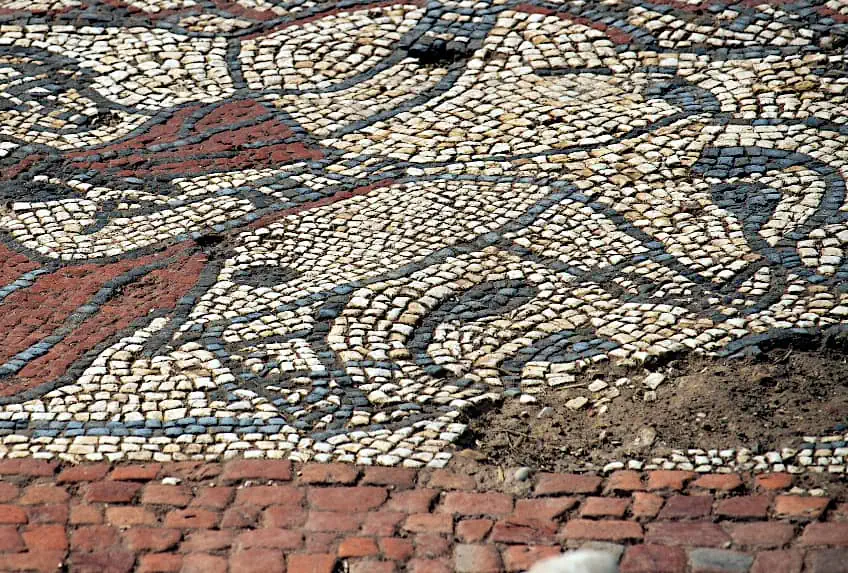
Visual Features and Characteristics of Roman Mosaic Art
Now that you have a basic understanding of what Roman mosaics are and how they were created in the past, we will now examine some of the defining characteristics found in Roman mosaics, which include popular subject matter and general features.
Popular Subject Matter
Many Roman mosaics often portrayed subjects from Greco-Roman mythology and historical events. These majestic and often colorful mosaics often featured heroic figures such as Alexander the Great, battle scenes, and mythological narratives that added a sense of sophistication to the city. Other mosaics featured everyday scenes and objects, with some even serving as “Beware of the Dog” signs in the entryways to homes. Many surviving Roman mosaics originated from other European sites such as Italy while intricate floor mosaics, or their remaining features, survived from the end of the Roman Empire.

Geometric Mosaics
Another interesting genre in Roman mosaic floors was geometric mosaics, which dominated the Roman Empire and were often part of decorative features for private bathhouses and homes. The geometric Roman patterns contained elaborate details and labyrinth-like visuals, which were regarded as “bearers of good luck” for people who could exit the maze.
It was a custom for athletes at the time to walk through these “mazes” on the way to the bathhouse to prepare for their competitions. These mazes were seen as the pattern on the mosaic floor, which was believed to “heighten” the senses of the athletes as they were made aware of the tactile nature of their feet against the mosaic.
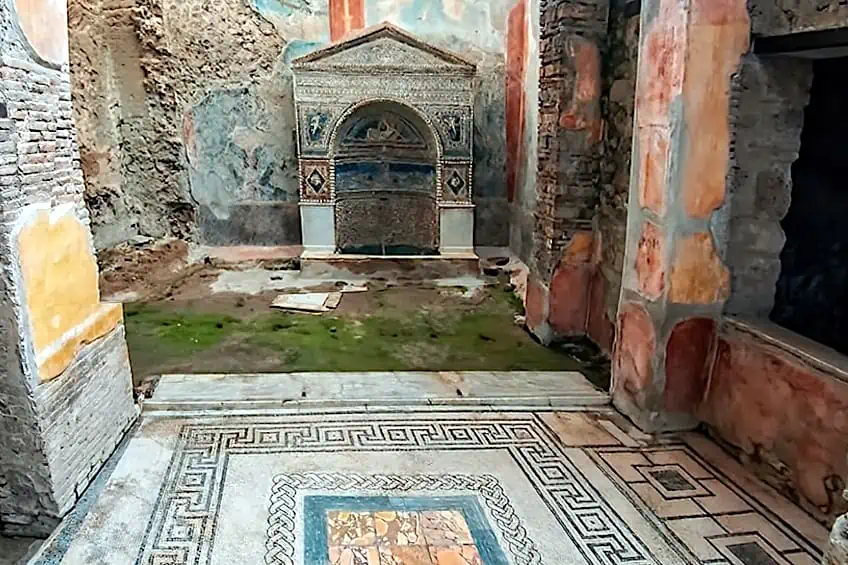
The size of the tesserae also influenced the artwork to a degree but this did not stop artists from developing complex scenes. Many great Roman mosaic floors presented a trickery of the eye effect known as trompe l’oeil, which through repetitive patterns and even an emphasis on simple patterns, could produce the desired effect for floor mosaics that would be viewed from an elevated standpoint. The inclusion of geometric designs also coincided with floral patterns, which are regarded as non-figural designs. Most of these Roman patterns were used as decorative borders for the main scene and were often very intricate.
Portraiture in Roman Mosaics
Portraiture was not only featured in murals and paintings from the antiquities era. Portraiture was also a popular genre explored by mosaic artists who included society’s favorite heroic figures and mythological subjects in the artwork. Roman portraiture in mosaic art included scenes from everyday life and portrayed men and women alongside each other with similar physical features and dressings. This was a popular trend in Roman portraiture during 18 BCE with the origins of portraiture found in Roman silver coins called Denarii.
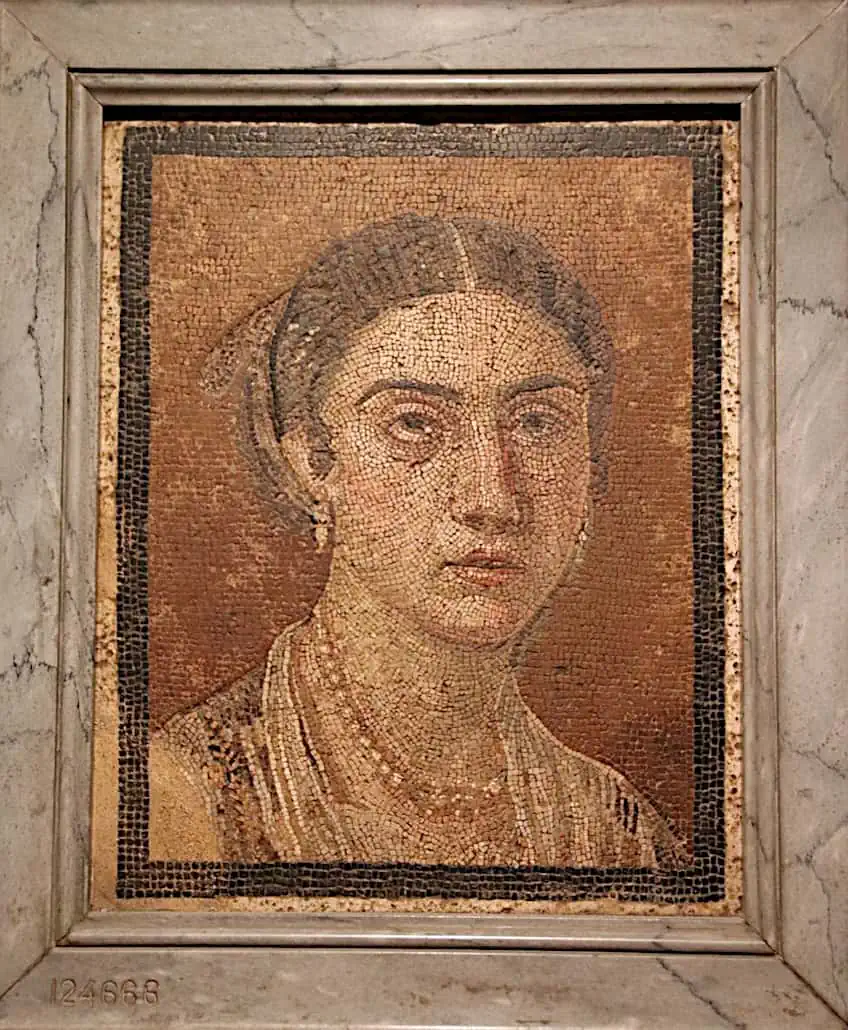
Battle Scenes
Entertainment, art, and pleasure intermingled with one another for the ancient Romans and this was evident in mosaics. Some of the most famous Roman mosaics include the historical battle of Issus, which took place between Alexander the Great and King Darius III. The Alexander Mosaic is perhaps one of the most famous Pompeii mosaics that one can study when looking at the history of Roman mosaic art. Another famous mosaic is the Gladiator Mosaic.
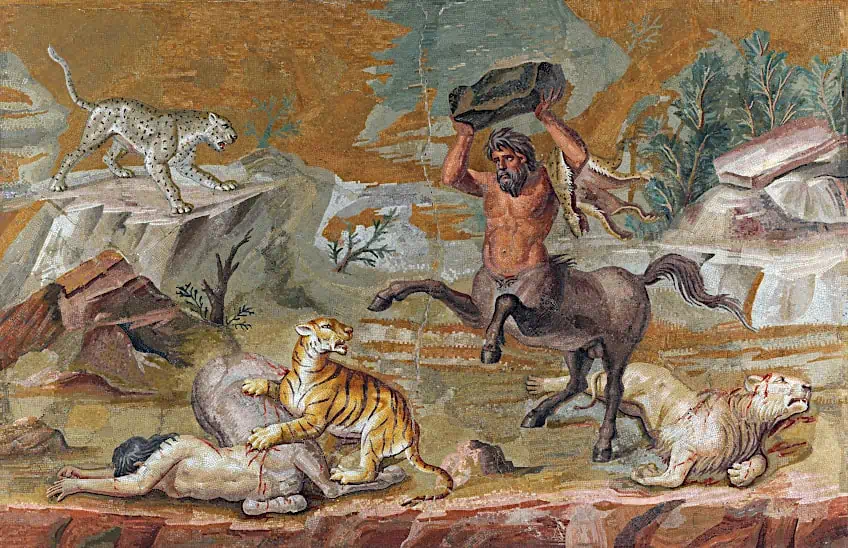
Sacred Imagery
Roman mosaics also featured religious and ritualistic imagery that related to animal sacrifice as well as the cult of the dead. According to ancient Roman beliefs about the dead, people were believed to undergo transformation upon death and become empowered beings. Images of deep religious meaning were also included in Roman mosaics and featured figures like Silvanus, a Roman God of the countryside, and animals.
Other interesting images from Roman mosaics include depictions of Jesus Christ as the sun God, Helios.
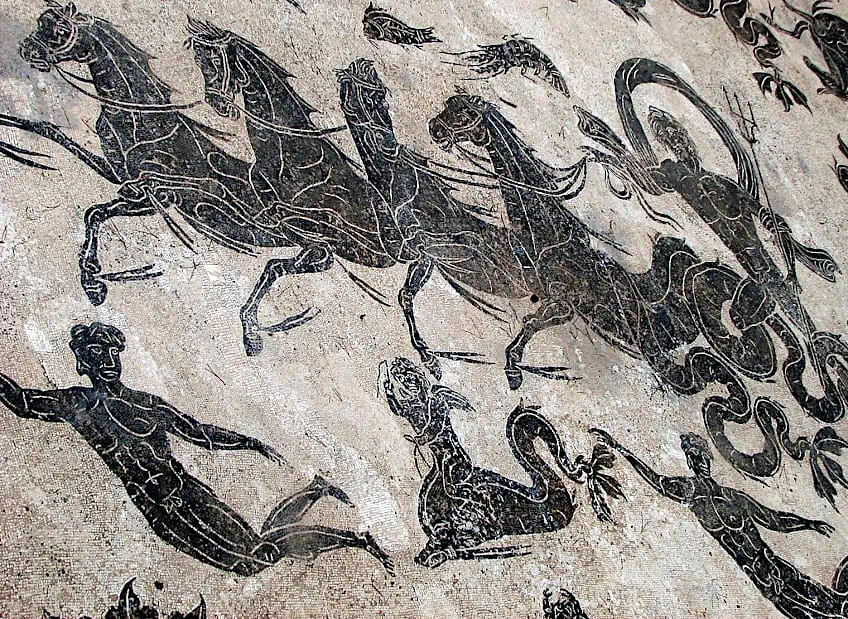
The use of the mosaic for the representation of cult beliefs was considered a replacement for the use of a statue despite the loss of three-dimensionality. Mosaics were therefore quite popular in immortalizing religious iconography.
Early Christian Mosaics
Roman art also saw the introduction of early Christian-inspired mosaics that emerged after Emperor Constantine permitted the practice of the Christian faith around 313 CE. Some of these early artworks can be viewed at the Santa Costanza church in Italy, Rome. Creating religious imagery on the floors of buildings and important spaces was an antiquarian practice, which is also found at the cathedral complex in Aquileia, Italy.
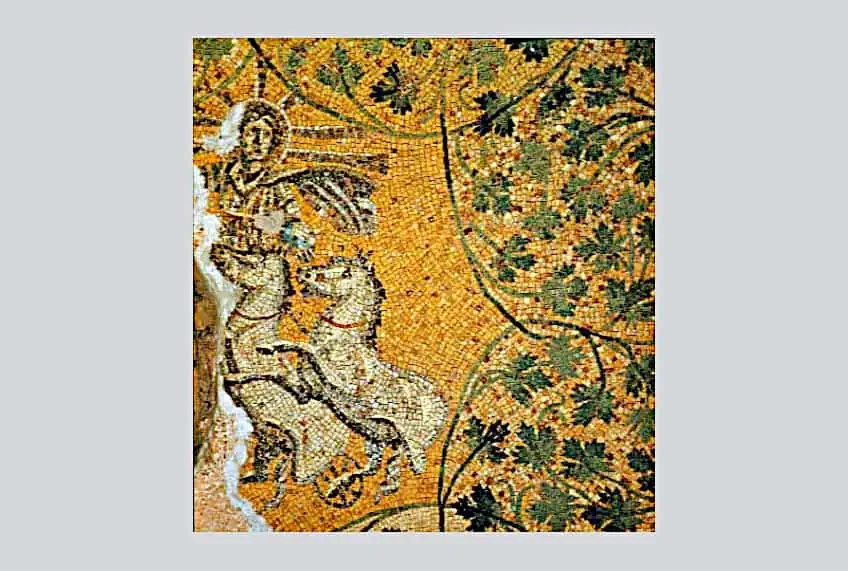
Famous Examples of Roman Mosaics
Gaining knowledge of the way that early Roman culture influenced the genre and medium of Roman mosaic art is key to viewing the artwork. Now that you have gotten an informed idea of Roman mosaics, you can now enjoy some of the most famous Roman mosaics in art history that will liven up your study of mosaics!
The Alexander Mosaic (c. 100 BCE)
| Artist(s) | Philoxenus of Eretria or Aristides of Thebes (original painting) |
| Date | c. 100 BCE |
| Medium | 1.5 – 4 million tesserae |
| Dimensions (cm) | 272 x 513 |
| Where It Is Housed | National Archaeological Museum, Naples, Italy |
The Alexander Mosaic is one of the most famous Pompeii mosaics in the world. The mosaic was created around 100 BCE and portrays the iconic Battle of Issus, which marked the fall of the Persian Empire and the fall of Darius III. The famous Roman mosaic is believed to have been created by Philoxenus of Eretria and remains one of the best-surviving mosaics from the ruins of Pompeii.
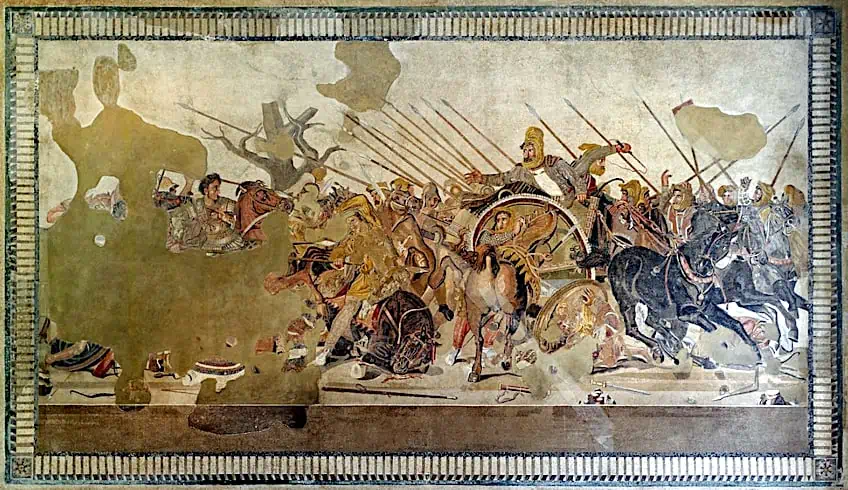
The artwork was inspired by a painting made by an artist called Thebes or Aristides, which is now no longer in existence. The battle scene portrays around 50 men and is a great example of the artistic flair of early mosaic artists and Roman creatives’ passion for emotional battle scenes.
Roman Mosaics from Lod (c. 300 CE)
| Artist(s) | Unknown |
| Date | c. 300 CE |
| Medium | Stone tesserae |
| Dimensions (cm) | Varied |
| Where It Is Housed | The Metropolitan Museum of Art (on loan), New York City, United States |
Lod is a famous modern town in Israel that contained one of the most interesting discoveries in Roman mosaics in Contemporary history. In 1996, a highway construction site unknowingly contained Roman mosaics, which were created around 300 CE and for your context, placed over 700 years ago. The history of ancient Lod is also fascinating. Lod was previously known as Lydda, which was a city that was destroyed by the Romans’ hand around 66 CE during the Jewish war. By 200 CE, Lydda became a Roman colony under Septimius Severus and eventually became a Christian city. In 636 CE, the city was conquered by Arab powers, which adeptly frames the significance of the discovery and its place in mosaic art history.

The finds resulted in a massive mosaic spread out across 50 x 27 feet with other objects on the floor that dated to the 4th century CE. The dating of the objects is what assisted in the estimated dating of the mosaic’s creation date and was originally part of a private house that also contained rooms for the reception and entertainment of guests.
Due to the excellent preservation quality of the mosaics, many have been intrigued by the imagery and background of the mosaic. Some of the imagery featured in these mosaics include various wild animals, a mythical sea creature, black-checkered stars, and other interesting motifs. Another interesting aspect of the mosaic was that it contained no imagery that hinted at the owner’s religious background or preference and was thus a purely creative or symbolic work of art.
The mosaic also contained elements from other well-known mosaics, suggesting that the mosaic was intentional, alluding to the fact that the owner was most likely a fan of mosaic art and lore. It can be assumed that the owner was also well-traveled since the mosaic featured animals such as giraffes and elephants, which were uncommon for traditional Roman mosaics.
Fragmentary Mosaic Floor with Bear Hunt (c. 4th Century CE)
| Artist(s) | Unknown |
| Date | c. 4th Century CE |
| Medium | Stone tesserae |
| Dimensions (cm) | 661 x 869 |
| Where It Is Housed | J. Paul Getty Museum, Los Angeles, United States |
The Fragmentary Mosaic Floor with Bear Hunt mosaic is another popular Roman mosaic that was created sometime in the 4th century CE by an unknown artist. The mosaic was first discovered in 1901 close to Pozzuoli, Italy, and has since been passed down to the Schiano Muriello family and later sold to the J. Paul Getty Museum in Los Angeles. The mosaic is a classic example of the use of stone tesserae in Roman mosaic art as well as the complexity with which the Romans viewed and incorporated narrative into mosaic art. The fragment originated from a piece of floor and portrays a hunting scene called “the bear hunt”. There appear to be three figures remaining while one is known as “Lucius”, as described in the inscription on the mosaic. Another hunter is identified as “Minus” and the group appears to ensnare four bears into a large net with one successful capture.
One of the most beautiful aspects of this mosaic is the elaborately decorated border featuring foliate garlands, an acanthus scroll, multiple heads in the corners, and imaginative creatures and fruits on the edges.
The beauty of such mosaics illuminates the fact that the art form of mosaic-making was not only a way of visually illustrating the complex social narratives of the day, but it was also a playground for artists to showcase their unique tastes and styles.
From the invention of the tesserae in mosaic art to the compelling narratives and figurative scenes featured in Roman mosaic art, it is not hard to reconcile with the genius of ancient artists. The seemingly simple forms of technology in the art are still being discovered and point us in the direction of the potential for maximizing the effects and matter of a medium. We hope that this introduction to Roman mosaics has been an inspirational adventure from which you can begin to explore the art of mosaic-making.
Frequently Asked Questions
What Is a Roman Mosaic?
A Roman mosaic is a mosaic artwork that was created over 2,100 years ago with the earliest known mosaics dating back to ancient Mesopotamia around the 3rd millennium BCE. Roman mosaics refer specifically to mosaic art that was created during the Roman Republic and before the close of the Roman Empire, which was around 476 CE.
What Are Roman Mosaics Made Of?
Roman mosaics are made up of a combination of different stones, precious metals, and glass materials called tesserae. The invention of tesserae was crucial to the development of mosaic art in the Roman period and was inspired by Greek mosaic art, which included the use of larger stone arrangements.
What Is the Most Famous Roman Mosaic?
The most famous Roman mosaic is considered to be the Alexander Mosaic, which was created by an artist called Philoxenus of Eretria around 100 BCE. The Alexander Mosaic illustrates a famous Roman battle scene known as the battle of Issus, which marked the historical fall of the Persian Empire under King Darius III, who was defeated by Alexander the Great.
Liam Davis is an experienced art historian with demonstrated experience in the industry. After graduating from the Academy of Art History with a bachelor’s degree, Liam worked for many years as a copywriter for various art magazines and online art galleries. He also worked as an art curator for an art gallery in Illinois before working now as editor-in-chief for artfilemagazine.com. Liam’s passion is, aside from sculptures from the Roman and Greek periods, cave paintings, and neolithic art.
Learn more about Liam Davis and about us.
Cite this Article
Liam, Davis, “Roman Mosaic – A Guide to Rome’s Tesserae Arts.” artfilemagazine – Your Online Art Source. May 30, 2023. URL: https://artfilemagazine.com/roman-mosaic/
Davis, L. (2023, 30 May). Roman Mosaic – A Guide to Rome’s Tesserae Arts. artfilemagazine – Your Online Art Source. https://artfilemagazine.com/roman-mosaic/
Davis, Liam. “Roman Mosaic – A Guide to Rome’s Tesserae Arts.” artfilemagazine – Your Online Art Source, May 30, 2023. https://artfilemagazine.com/roman-mosaic/.


